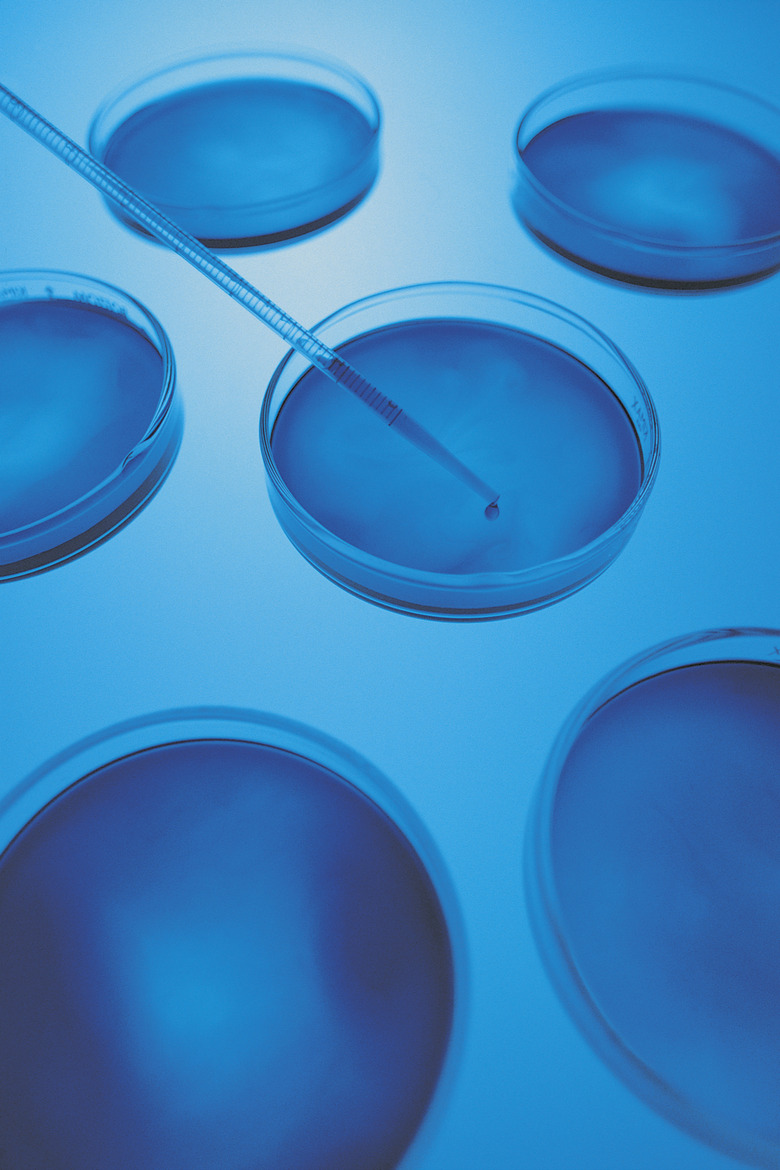What Is A Positive Control In Microbiology?
The word "control" has a number of meanings in science, but just as long as you hear a "positive" in front of it, you can know immediately what it means in microbiology: an experiment that contains a repetition of itself, only with a treatment known to work. Even though this technical definition might sound confusing, the idea of a positive control is relatively intuitive: a positive control is a duplicate experiment that helps microbiologists confirm the correctness of their experiments and results.
“Control” Is a Confusing Word
"Control" Is a Confusing Word
Ask a child what a control is and he'll likely point to the TV remote. Ask a statistician the same question, and he'll tell you it's a variable that can cause problems in an experiment. But ask a microbiologist and she'll tell you that a control is a duplicate experiment run with a different experimental group of subjects or treatments. According to the College of Charleston, microbiologists see controls as necessary, using them to check the findings of a certain experiment against those that have already produced results.
Addition and Subtraction: What’s the Difference?
Addition and Subtraction: What's the Difference?
Controls come in two flavors: positive and negative. A negative control is a controlled experiment that microbiologists know will have a negative outcome, whereas a positive control is an experiment that microbiologists know will have a positive outcome. These controls allow for comparisons for the new experiment, helping a microbiologist check new results against already known results.
For example, a microbiologist testing the effectiveness of a new soap in killing bacteria could run an experiment on whether the soap works, but she won't know if it truly works without comparing the results against those in an experimental group using soap known to work, and against those in an experimental group using no soap, which definitely won't work.
A Microbiology Positive Control Example: Far Removed from Your TV
A Microbiology Positive Control Example: Far Removed from Your TV
In microbiology, a scientist often runs a new experiment twice: once to find out results and a second time to compare the results. She will usually run the experiments simultaneously.
For example, a microbiologist who wishes to check the effect of a new soap on killing germs might run one sample of germs under soapy water, checking the amount of germs killed afterward. She would create the "positive control" version of the experiment by replacing the first soapy water with soapy water made from a soap that she knows to work in killing bacteria. Running the experiment again will produce results that might differ from the results of the first experiment.
What’s the Point? Logic!
What's the Point? Logic!
Checking a new treatment against a positive control is both a way of checking for effects and for checking for problems in an experiment. Logically, if a new treatment, such as a new liquid soap, produces results similar to the old treatment, a bar of soap, then the scientist can conclude that the new method works. This way of performing a controlled experiment has the added benefit of allowing a microbiologist to immediately compare two different treatments.
What’s the Point? Troubleshooting
What's the Point? Troubleshooting
In other situations, a microbiologist might find a problem in her controlled experiment after looking at the positive control's results. For example, she might see that the new soap kills less than 10% of the bacteria and conclude that the soap is not effective.
But if she checks this result against a soap proved to work, she might find that the "proven" soap also only kills less than 10% of the bacteria. From here, she might conclude that the experiment has a problem and rework her experiment.
Cite This Article
MLA
Verial, Damon. "What Is A Positive Control In Microbiology?" sciencing.com, https://www.sciencing.com/what-is-a-positive-control-in-microbiology-12760156/. 31 July 2019.
APA
Verial, Damon. (2019, July 31). What Is A Positive Control In Microbiology?. sciencing.com. Retrieved from https://www.sciencing.com/what-is-a-positive-control-in-microbiology-12760156/
Chicago
Verial, Damon. What Is A Positive Control In Microbiology? last modified August 30, 2022. https://www.sciencing.com/what-is-a-positive-control-in-microbiology-12760156/
